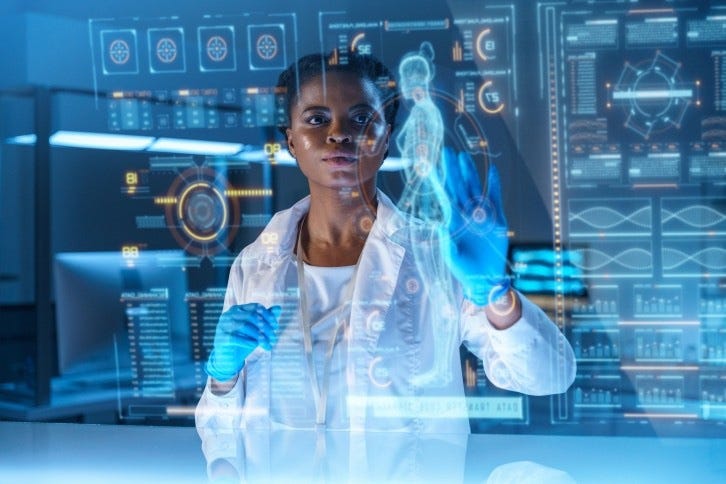Introduction:
In the scene of current medical services, innovation has arisen as a strong power upsetting patient consideration. From computerized well being records to cutting edge clinical imaging, inventive advancements are changing how medical services is conveyed, making it more productive, open, and customized. This article dives into the manners by which medical services innovation is reshaping patient consideration, engaging the two patients and medical services suppliers the same.
Perhaps of the main progression in medical services innovation is the digitization of well being records. Electronic Well being Records (EHRs) have supplanted conventional paper-based records in numerous medical care settings, empowering consistent admittance to patient data across different medical services suppliers and claims to fame. This interoperability guarantees that clinicians approach exhaustive patient information, prompting better-educated independent direction and further developed coordination regarding care. Patients additionally benefit from EHRs through expanded accommodation, as they can undoubtedly get to their clinical records and speak with their medical care suppliers through secure internet based entries.
The Role of Tele Medicine In Health Technologies:
Moreover, the coordination of tele medicine into medical care conveyance has changed the manner in which patients access clinical consideration, especially in remote or undeserved regions. Tele medicine permits patients to talk with medical services experts somewhat through video conferencing, disposing of the requirement for in-person visits for routine arrangements or subsequent meet-ups. This innovation has demonstrated priceless during the Coronavirus pandemic, empowering progression of care while limiting the gamble of viral transmission. Past accommodation, telemedicine upgrades admittance to particular consideration for patients who may some way or another face hindrances, for example, geological distance or versatility issues.

Moreover, wearable wellbeing gadgets and portable wellbeing applications have engaged people to play a proactive job in dealing with their wellbeing. From wellness trackers observing active work to applications following nourishment and rest designs, these advances furnish clients with continuous experiences into their wellbeing and health. For patients with persistent circumstances, for example, diabetes or hypertension, remote observing gadgets empower consistent following of essential signs and side effects, working with early intercession and forestalling complexities. Moreover, wearable gadgets outfitted with biometric sensors can make clients and medical care suppliers aware of potential medical problems, empowering ideal clinical consideration when required.
The Power of Artificial Intelligence in Healthcare:
In the domain of diagnostics and therapy, clinical imaging innovation has seen noteworthy progressions, empowering more exact and productive conclusion of different ailments. From Attractive Reverberation Imaging (X-ray) and Registered Tomography (CT) outputs to ultrasound and X-beam imaging, these modalities give clinicians itemized physical and practical data pivotal for analysis and treatment arranging. Moreover, developments, for example, 3D printing have reformed careful preparation and clinical gadget fabricating, considering the production of patient-explicit inserts and prosthetics customized to individual life systems.

Man-made brainpower (computer based intelligence) and AI calculations are additionally assuming an undeniably conspicuous part in medical care, helping clinicians in diagnosing illnesses, foreseeing patient results, and upgrading therapy techniques. Computer based intelligence controlled indicative instruments can dissect clinical pictures and patient information with remarkable speed and exactness, assisting radiologists and other medical services experts with identifying anomalies and make convenient conclusions. Besides, simulated intelligence driven prescient examination can distinguish patients in danger of fostering specific circumstances or confusions, empowering proactive mediations to further develop wellbeing results and lessen medical services costs.
The Power of Healthcare Technology for Positive Transformation:
While medical services innovation holds tremendous commitment for working on persistent consideration, it likewise presents difficulties connected with information protection, security, and moral contemplations. Protecting patient data against network safety dangers and guaranteeing consistence with guidelines, for example, the Health care coverage Convenientce and Responsibility Act (HIPAA) are basic needs for medical services associations taking on computerized innovations. Also, addressing differences in admittance to innovation and computerized proficiency among patient populaces is fundamental to guarantee impartial medical care conveyance.
Conclusion:
Medical services innovation is irrefutably changing patient consideration, introducing a period of exceptional advancement and strengthening. From electronic well being records and telemedicine to wearable gadgets and artificial intelligence driven diagnostics, these headways are reshaping the medical services scene, driving upgrades in productivity, openness, and patient results. Nonetheless, it is critical to address related difficulties and guarantee that innovation is conveyed mindfully and evenhandedly to expand its advantages for all patients.

